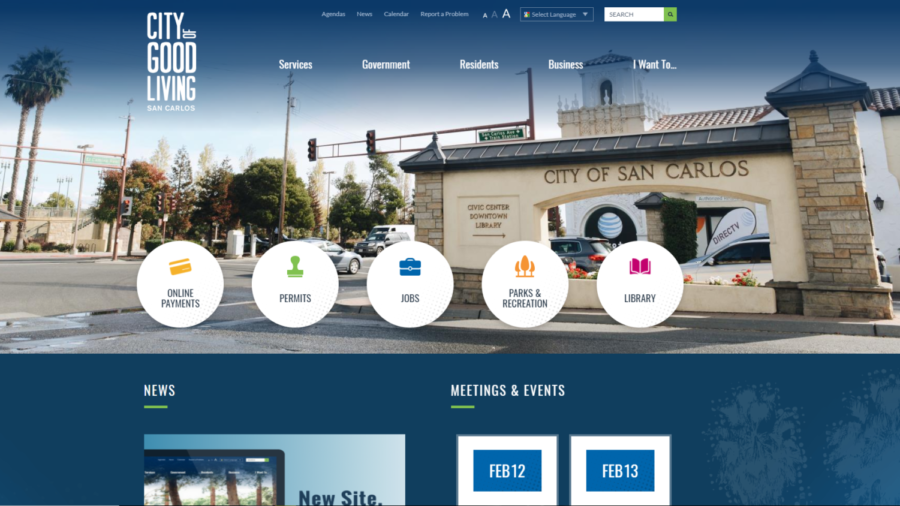The city of San Carlos recently launched a new website designed to better serve its community, its first major rework since its creation in 2009.
The website took over a year to make with the collaborative efforts of two companies. San Carlos partnered with Vision, a company specializing in website design for government organizations, and Brafton, a company that helps manage the content and pictures of the website, to design and run the site.
They helped design the actual website with input from a subcommittee in charge of the website.
Released on Jan. 22, the new website was designed to be more efficient with a simplistic interface that is easy to use. It was also designed to be more compatible with mobile devices allowing users to access the site away from a computer.
“We wanted it to be easier for everyone using the website to use it,” said Tara Peterson, the assistant city manager of San Carlos.
Around 50 percent of the website’s use is from mobile devices, which is why the city wanted to make a fully functioning, mobile-oriented website.
“This new website is meant to better serve the city and its residents,” Peterson said.
Along with a friendlier user interface, the new website is also designed to better serve people with visual impairments or language barriers. A translate feature is available to people who would like to read in other languages such as Spanish, Chinese, Arabic, or Korean. The size of the text can also be enlarged or reduced for better reading.
The website also serves as a “virtual City Hall” where citizens can access official documents, fill out online forms, and make city payments. Users also have access to all community and city news as well as events.
“A lot more people visit the website than actually go to city hall, so we wanted people to access our government services as quickly and efficiently as possible,” said Cameron Johnson, a member of the San Carlos city council. “We want this website to showcase what San Carlos is about.”
The redesign is representative of local efforts to modernize to better serve the needs of current and future generations by adapting to the direction technology is taking.
“This experience has been a learning curve, and there’s still a lot more for us to do,” said Peterson.


